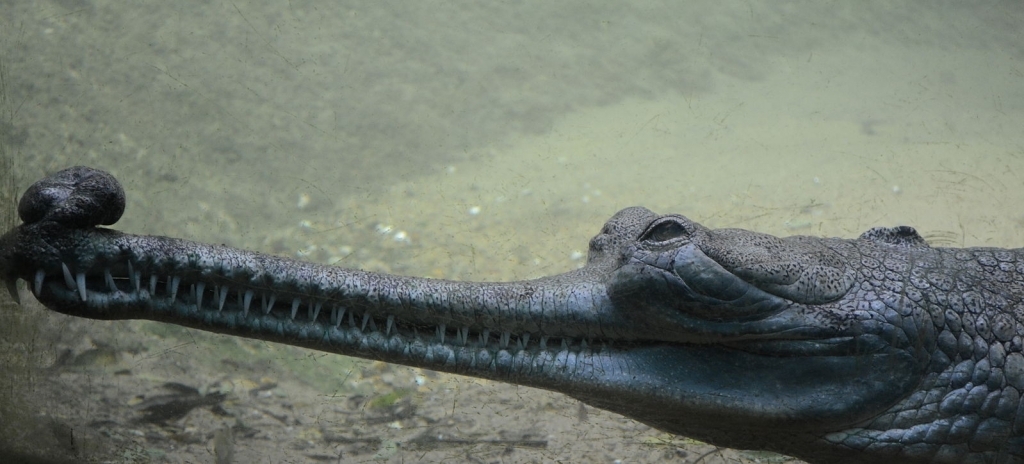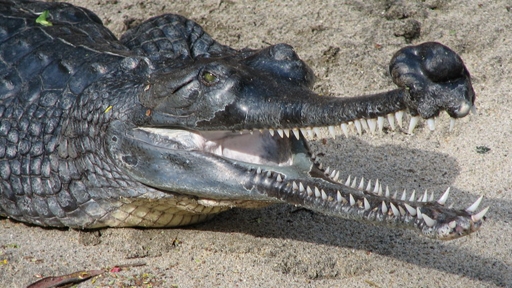
The gharial, also known as the gavial, is an extremely rare fish-eating crocodile—only about 200 individuals remain in the wild.
This unique crocodilian is native to the northern part of the Indian subcontinent. While they once thrived in all major river systems, this species is now limited to only 2% of their historical range.

Gharials are listed as critically endangered and experienced a 98% population decline in only 3 generations. The populations have been decimated by entanglement in fishing gear and overhunting for skins, trophies, meat, eggs, and traditional medicines. They also face habitat loss and a substantial depletion in fish, their only food source.
These crocodilians are built for hunting fish, and their physical features make it impossible to catch larger prey. Their extremely long, thin snouts boasting 110 sharp teeth are well adapted to catching fish: the narrow snout reduces resistance in the water, and their sharp teeth allow them to easily trap fish. They lack the mechanical jaw strength of their crocodile and alligator cousins.
Watch a gharial being fed to see their unique jaws in action:
Gharials are one of the world’s longest crocodilians, measuring up to 20 feet in length. The longest recorded animal was a whopping 23 feet — the male was shot and killed in the Kosi River in 1924. Though larger specimens were once common, present-day gharials generally only average 11 to 15 feet in length.
Individuals have been recorded weighing up to a ton, but again, present-day animals are smaller and measure only between 350 to 550 pounds.

A unique feature of these animals is the distinctive projection at the end of their snouts. This is present only in sexually mature males; it indicates that a male is ready to mate, and also may be used as a sound resonator or for bubbling or other sexual behaviors.

Because the population is so limited, conservation efforts are underway in India. Currently, conservationists are attempting to raise the animals in farms and release them once they’ve reached approximately 3 feet in length. Previous attempts at reintroduction have not been very successful, but scientists are hopeful that efforts will soon pay off.
Find out what scientists are doing to conserve the gharial in the video below:




